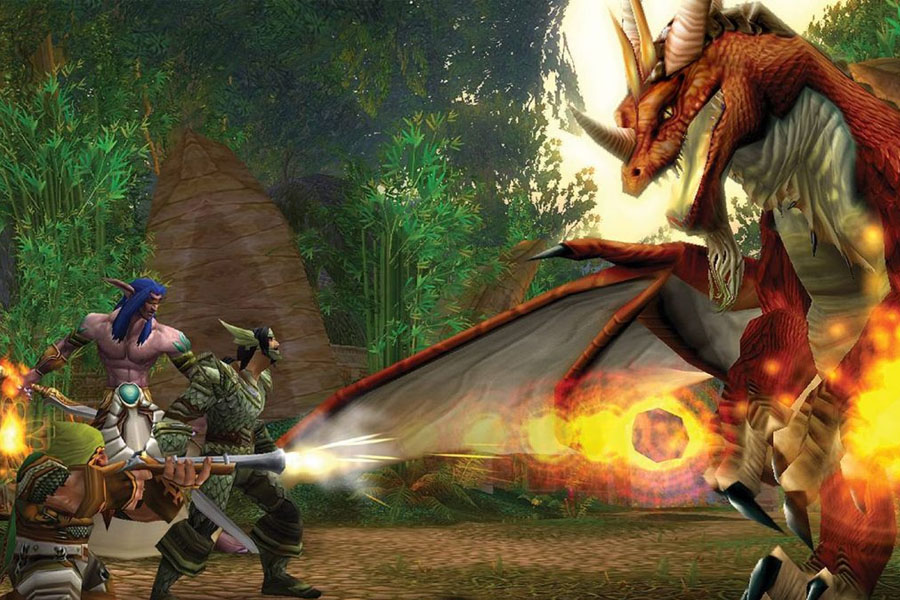For the first time in nearly two decades, MMORPGs and the streamers who play them in large groups are at the forefront of gaming culture.
If you’ve spent any time in the gaming community in the last year, you’ve almost certainly heard of a recently released MMORPG like New World, Lost Ark, or the recently revitalized Final Fantasy XIV: A Realm Reborn.
In addition to the MMO mainstays that have yet to fade away—games like World of Warcraft, Guild Wars 2, and others—these titles have helped to make MMOs more accessible and diverse in a variety of ways.
MMO players have more options than ever before in 2022, with a wide range of gameplay styles, worldbuilding and storytelling techniques, and wildly different subgenres within games.
Since the early 2000s, when games like World of Warcraft, EverQuest, and the original Guild Wars all competed and coexisted, the MMO genre hasn’t been as visible, culturally dominant, or profitable as it is now. While the new MMO release market isn’t as crowded as it was in the early 2000s, it’s still a big part of the online zeitgeist.
Surprisingly, Amazon, which spent the better part of the “pandemic era” of gaming dipping its toes (and eventually its entire body) into the waters of MMORPGs, is the company behind the recent rise of the MMO genre. New World, a long-awaited, endlessly delayed title that was first announced at TwitchCon 2016 and was originally scheduled to launch in May 2020, was finally released in 2021. The company went on to publish Smilegate’s Lost Ark for Western consumers five months after the official launch of New World, adding another massive online title to its arsenal.
From February 8 to 15, the first week of Lost Ark’s Western release, the game became the fourth-most-played game on Steam, trailing only PlayerUnknown’s Battlegrounds, Dota 2, and CS:GO.
According to a Bloomberg report from 2021, Amazon invests nearly $500 million per year in its game development prospects. While that entire budget can’t possibly be thrown into its current division of running MMO tiles, games like New World and Lost Ark have been carrying the studio’s banner for the last six months in particular—especially since previously planned flagship releases like Breakaway and Crucible were canceled outright during their development processes.
Aside from Amazon, gaming behemoths like Blizzard Entertainment, ArenaNet, and Zenimax continue to support their trademark MMO games, investing money into expansions for MMO titles long after they were first released.
World of Warcraft, for example, has seen eight expansions (as well as two re-releases of previous versions of the game) over its 18-year lifespan and remains one of Blizzard’s most reliable cash cows. Shadowlands, the game’s most recent expansion, became the fastest-selling PC game of all time in 2020, selling 3.7 million copies in its first 24 hours.
Even though MMOs have their own internal online culture, which is particularly important given that their model is largely based on social collaboration, that focus on player interaction can be extended beyond the game’s boundaries and into a new medium: streaming. MMOs have found a home for their naturally social roots to expand and linger on Twitch, YouTube, and other platforms.
When a new MMO is released, millions of potential players and interested fans flock to Twitch to see the game through the eyes of their favorite celebrities. And there haven’t been many bigger events in the streaming world in the last two years than MMO launches.
According to Twitch stats tracking website SullyGnome, over 900,000 viewers tuned in to streams of New World on its first day, while Lost Ark streams drew over 1.2 million viewers at its peak during its debut.
It’s debatable whether those impressive numbers are the result of popular streamers flocking to these games and bringing their fan bases with them, or whether popular MMOs have taken on a life of their own. However, according to SullyGnome, the fact that over 12,000 streamers each contributed to the popularity of Raiders of the Lost Ark on its launch day, and over 19,000 streamed the re-release of World of Warcraft: Classic in 2019, should be indicators that the MMO genre draws in the Twitch community in droves.
For nearly two decades, World of Warcraft, the industry’s longtime leader, has survived solely on the strength of its brand recognition and steadfast support system. Even niche games like Eve Online, MapleStory, and Dungeons & Dragons Online have been online for over 15 years and are still supported by their respective developers.
MMOs’ true online nature allows communities to form and flourish for years after their initial release. So, while nostalgic gamers cling to the past, perhaps the next generation of MMO fans will have something to look forward to in the genre’s resurgence in the early 2020s.
Maybe in another 15 years, we’ll all be playing games like Raiders of the Lost Ark and New World for nostalgia, while a new wave of MMOs keeps the genre alive.







